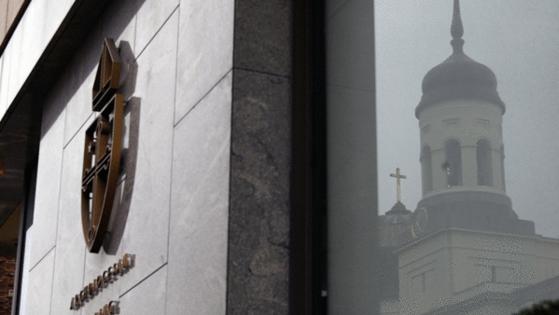A difficult choice for Baltimore: Which Catholic churches will close?
Published in Religious News
BALTIMORE — A clap of thunder sounded across Baltimore on a rainy Saturday morning in 2020. The lockdown associated with the early days of the COVID pandemic was in place and the city seemed eerily quiet until the fire sirens began to wail.
During that early spring squall, a bolt of lightning struck an East Baltimore church. Soon the steeple of the old St. James the Less Roman Catholic Church was burning. It was a dramatic fire — the church was a lofty presence in the neighborhood and people who lived a mile away in Mount Vernon were swapping pictures of the event.
As Baltimore lost nearly 350,000 people (some say more) in the last 50 years, something had to give. And Catholic church numbers have reflected this population hemorrhage. More church closings are to be announced by the Archdiocese of Baltimore in the future.
St. James closed as a functioning Roman Catholic church in 1986. Its organ was moved to Pennsylvania and its stained glass windows given to other congregations.
It went on to house a new congregation — the Urban Fellowship Bible Church, but the lightning bolt changed that too.
The burned out, but not destroyed, building remains at Aisquith and Eager streets, as does another former Catholic congregation, St. John the Evangelist, at Valley and Eager.
The presence of two Catholic congregations so close together seems like an error of planning, but 19th-century ethnic patterns dictated that there be a separate church for German immigrants (St. James) and one for the largely Irish parishioners of the old Tenth Ward.
Several Baltimore neighborhoods contain seemingly redundant churches only blocks apart. But the ethnic divides of Ireland, Germany, Italy and Poland once ran deep in the city. And it was a point of pride that these nationalities could support their own houses of worship.
Church closing — and the end of parish life — remain topics among those with ties to these congregations.
What about the descendants of the families who endowed the construction of churches and in several cases, churches where donors are buried within the walls?
Another large Catholic Church closed in East Baltimore several years ago. It was an enormous complex, St. Michael the Archangel, at Lombard and Wolfe streets in Butcher’s Hill. A developer bought the building and made it into the Ministry of Brewing, now a popular gathering spot.
My own great-grandparents were married at St. Michael in the 19th century and I didn’t like the idea that what once was a place of worship would cease to function. But even I have to admit that St. Michael’s, the solidly built structure with its own mighty bell tower, has accommodated a new use.
And a new generation, who would never have visited the landmark, is now seeing (the former) St. Michael’s amazing interiors.
When the church closures are announced, there will be many, who like me, have emotional ties or family association with these structures.
But that does not mean demolition or banishment. Over the past several weeks conscientious developers have inquired about which of these neighborhood institutions could be hitting the real estate market as church officials declare them surplus.
A decade or more ago the United Methodist Church closed numerous small churches in the Hampden neighborhood. There was generally an orderly reuse of these properties. New businesses often took over the old shells of the churches and the incoming set of workers seemed to like being in an unconventional space.
Nevertheless, I do not envy the task of the church officials who place the padlocks on the places where the weddings, baptism and funerals once took place.
©2024 Baltimore Sun. Visit baltimoresun.com. Distributed by Tribune Content Agency, LLC.







Comments